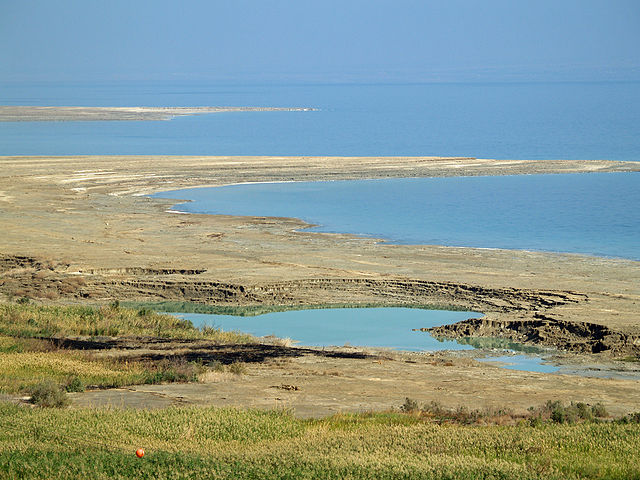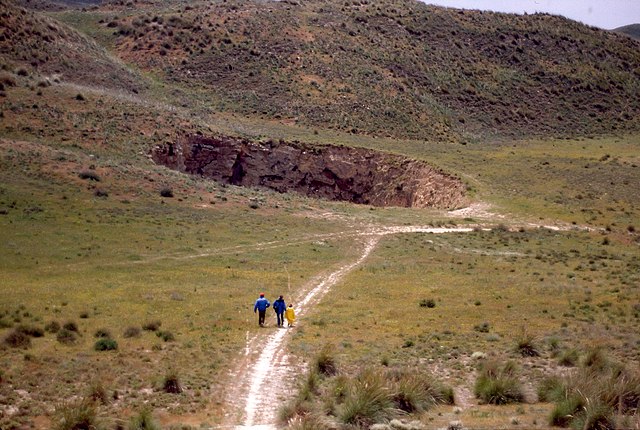A caldera is a large cauldron-like hollow that forms shortly after the emptying of a magma chamber in a volcano eruption. An eruption that ejects large volumes of magma over a short period of time can cause significant detriment to the structural integrity of such a chamber, greatly diminishing its capacity to support its own roof, and any substrate or rock resting above. The ground surface then collapses into the emptied or partially emptied magma chamber, leaving a large depression at the surface. Although sometimes described as a crater, the feature is actually a type of sinkhole, as it is formed through subsidence and collapse rather than an explosion or impact. Compared to the thousands of volcanic eruptions that occur over the course of a century, the formation of a caldera is a rare event, occurring only a few times within a given window of 100 years. Only seven caldera-forming collapses are known to have occurred between 1911 and 2016. More recently, a caldera collapse occurred at Kīlauea, Hawaii in 2018.

Landsat image of Lake Toba, on the island of Sumatra, Indonesia (100 km/62 mi long and 30 km/19 mi wide, one of the world's largest calderas). A resurgent dome formed the island of Samosir.
Valle Caldera, New Mexico
Satellite photograph of the summit caldera on Fernandina Island in the Galápagos archipelago
Oblique aerial photo of Nemrut Caldera, Van Lake, Eastern Turkey
A sinkhole is a depression or hole in the ground caused by some form of collapse of the surface layer. The term is sometimes used to refer to doline, enclosed depressions that are also known as shakeholes, and to openings where surface water enters into underground passages known as ponor, swallow hole or swallet. A cenote is a type of sinkhole that exposes groundwater underneath. Sink and stream sink are more general terms for sites that drain surface water, possibly by infiltration into sediment or crumbled rock.
The Red Lake sinkhole in Croatia
Sinkholes near the Dead Sea, formed when underground salt is dissolved by freshwater intrusion, due to continuing sea-level drop.
Collapse sinkhole in Chinchón, Spain.
Collapse formed by rainwater leaking through pavement and carrying soil into a ruptured sewer pipe.








